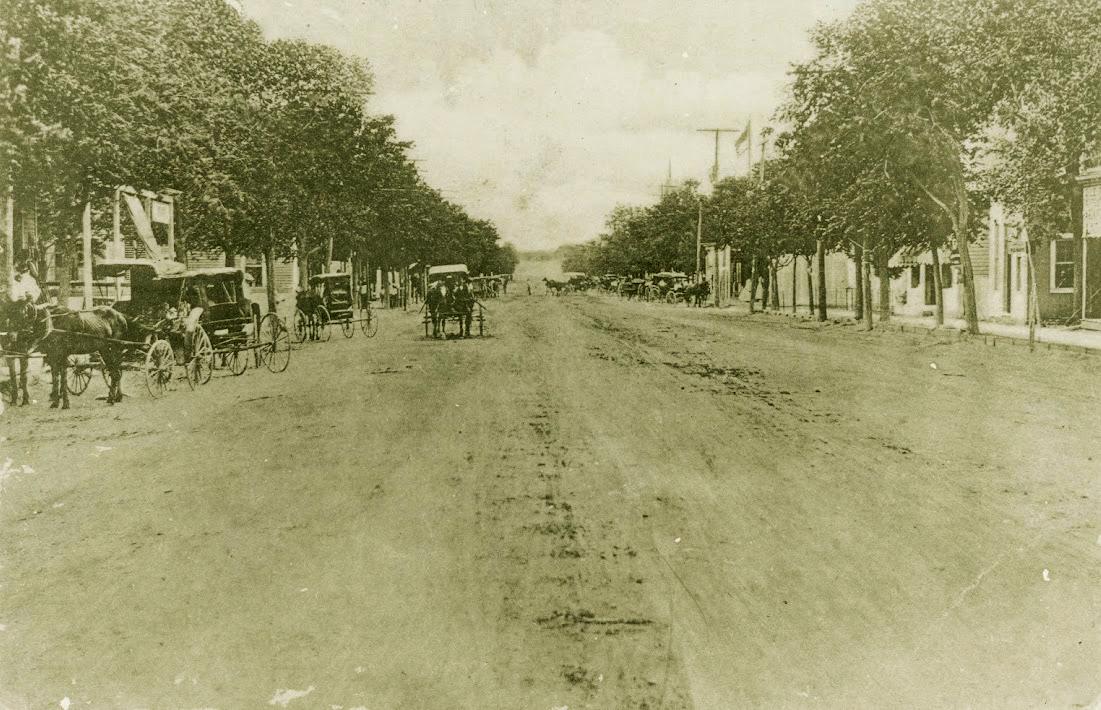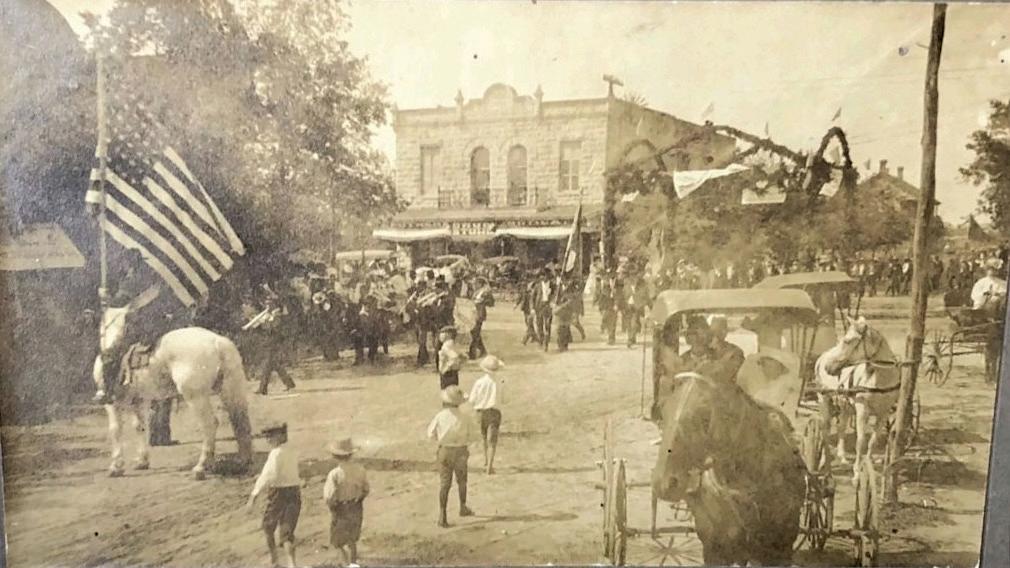
5 minute read
BEAUTIFUL BOERN E
By
“In 1852, being attracted by the rare beauty of this locality, a band of settlers founded the town of Boerne, which is now a thriving, progressive little city of 1500 inhabitants. Boerne has a first-class telephone system, an up-to-date electric light plant, a big gin, a corn mill, two strong banks, several good hotels, a first -class public school system, three churches, a first-class hospital, about 40 business houses; is the county seat of Kendall county; is the wealthiest town in Kendall county; it has the most progressive citizens to be found anywhere, a business men’s club, a first-class weekly newspaper. She entertains every year several hundred strangers, who come here from all parts of the country to enjoy the delightful and health giving climate, and to rest in the quietude among the beautiful hills of west Texas. The town is nicely laid off with broad, tree-lined streets, with an air of solidity and comfort. There is a sedateness and quiet charm about the place which never fails to impress visitors.” (Source: “Echoes…from the Archives,” Summer 2021, “A Snapshot in Time: Beautiful Boerne has Rapid Growth” by Val Anderson. Originally published in the San Antonio Light newspaper on Monday, August 31, 1908.)
Advertisement
While 115 years have passed since this glowing review of a 1908 Boerne, the general sentiment remains the same. Boerne is still a thriving city of progressive citizens that attracts businesses and impresses visitors with its charm and unique position in the Texas Hill Country. However, it should be noted that the 1908 newspaper author was incorrect in stating settlers founded Boerne — read on for the accurate version!
The history of Boerne is broad and storied, but from the support, knowledge and dedication of many volunteers and organizations there is much known and much still being discovered. The Kendall County Historical Commission commemorates historic buildings and events with the Texas Historic Marker program; the Boerne Area Historical Preservation Society operates the three-building complex on Historic Hill, which includes the Kuhlmann-King House, Pioneer Kitchen and Graham Building; and the Historic Landmark Commission supports the protection and restoration of landmarks and structures within the historic district.
For access to extensive collections pertaining to Boerne and Kendall County history, the Genealogical Society of Kendall
County and The Family History Place maintain genealogical databases and house a library of books, microfilm and other collected and salvaged documents; The Portal to Texas History has more than 100,000 historical documents and resource materials, including a growing collection from Boerne Star, about Boerne and Kendall County; The Patrick Heath Public Library and Dietert Community Archives manage a library of historical documents and produce the “Echoes…from the Archives” quarterly newsletter, which provides the most accurate accounts of Kendall County’s past as painstakingly researched by local historians. Organizations from neighboring communities are also great resources. For a brilliant photographic essay, read Brent Evans’ “Images of America-Boerne” book, which chronicles Boerne’s history from the beginning through 2005 with detailed narrative and rarely seen photos.
Many years ago, the Boerne Visitors Center created a Historic Walking Tour for a self-guided stroll past 46 restored homes and buildings in the historic district. A brochure and map are available online (www.ci.boerne.tx.us/1691/boerne-history) or pick up a copy at the Boerne Visitors Center to learn even more about our wonderful town. But before you set out on foot, here is a very brief history of how Boerne came to be:

In 1847, an estimated group of 40 German university students from the Darmstadt region settled a utopian colony named Bettina on the banks of the Llano River. However, their idealistic community was doomed from the start. As young intellectuals, they were unaccustomed to manual labor and communal farming, and conflict soon arose over the division of work. It wasn’t long before Bettina was abandoned. But the small group didn’t give up, dispersing to Austin, New Braunfels, Sisterdale, Comfort and a farm just outside of the area later platted as Boerne where six of the men established a new but smaller communal farm by Cibolo Creek. (Source: “Echoes…from the Archives,” Spring 2019, “Only in Comfort” by Anne and Mike Stewart.)
To give you one observer’s account of the disposition of these first settlers, August Siemering, a member of the group that first settled Sisterdale, wrote in an 1894 article titled “Texas, Her Past, Her Present, Her Future,” “They were all under the influence of Communism and intended to set up a regular Communistic colony. But the experiences they went through very soon made them change their views and principals entirely. Very soon they realized that every farmer would outdo them in the cultivation of the soil and that a lot of knowledge they had acquired in Germany could be applied to other things better than to ploughing and sowing. One by one they left their communistic colony and moved to settlements where life was a little more civilized…They were exclusively well-educated people…had an academic training: doctors, philologists, engineers, forest office candidates, etc. All of them later played promiment roles in the history of the civilization of Texas.” (Source: “Echoes…from the Archives,” Spring 2023, “The Pre-Boerne Settlers-Part VI” by Bryden Moon.)
Tusculum has long been believed to be the name given by the settlers to this pre-Boerne farm. Now, further research indicates that a local Tusculum did exist, but only in concept. In the early 1890s, historian Adolf Paul Weber came to Kendall County while writing about German settlement in Texas for his book, which translates to “Pioneers on the History of Germanism.” He discovered another Darmstadt emigrant, Doctor Ferdinand Herff, whose primary residence was in San Antonio. After acquiring more than 2,500 acres in the 1850s, Herff created a retreat along Cibolo Creek, where he escaped the heat of the city to enjoy his summer home. In his book, Weber compared the hilly landscape of Herff’s property to the ancient Tusculum region south of Rome. While there is no documentation that supports Tusculum being the early settlement’s name, locals still like the lore! (Source: “Echoes…from the Archives,” Winter 2021/2022, “The Pre-Boerne Settlement-Part I” by Bryden Moon.)
In 1852, John James and partner Gustav Theisen platted 578 acres surrounding Main Street and sold lots just like developments today. James had traveled through the Hill Country many times beginning in 1840, surveying land before settlers had even arrived. The name Boerne was given to this new settlement, adopted from the last name of Karl Ludwig Börne, a German-Jewish well-educated political writer who died in 1837 without ever setting foot in the U.S. However, the German and European emigrants of the time were presumably familiar with Börne’s writings of a united Germany that guaranteed equal human rights, all beliefs that resonated with them and ultimately led them to Texas. (Source: “Echoes…from the Archives,” Fall 2017, “What’s in a Name? Boerne, Texas, USA, Karl Ludwig Börne” by Bryden Moon.)
James went on to survey Bandera, Castroville, D’Hanis and Quihi, and is the father-in-law of Alfred Giles, the preeminent architect who designed many courthouses in Texas, including Boerne’s addition in 1909. Giles married James’ daughter in 1881 and the couple eventually settled on his Hillingdon Ranch near Comfort.
July 4, 1906
Gustav Theisen was also an advocate for the organization of Kendall County. In 1855, five petitions were presented to Texas legislature and, interestingly, were identical in both verbiage and handwriting, which would turn out to match Theisen’s signature from another document. A strong proponent of Boerne as the county seat, he was also promoting his Boerne real estate venture. Kendall County was created on January 10, 1862, and on April 26, 1862, his efforts paid off with Boerne winning the county seat by 67 votes over Sisterdale. (Source: “Echoes…from the Archives,” Fall 2015, author not listed.)
The Kendall in our county name came from George Wilkins Kendall, a journalist who co-founded the New Orleans Picayune. With coverage extending to the Republic of Texas, Kendall joined the Santa Fe Expedition, which subsequently landed him in a Mexican prison for a year, and the Mexican American-War as a Texas Ranger. He later became known as









